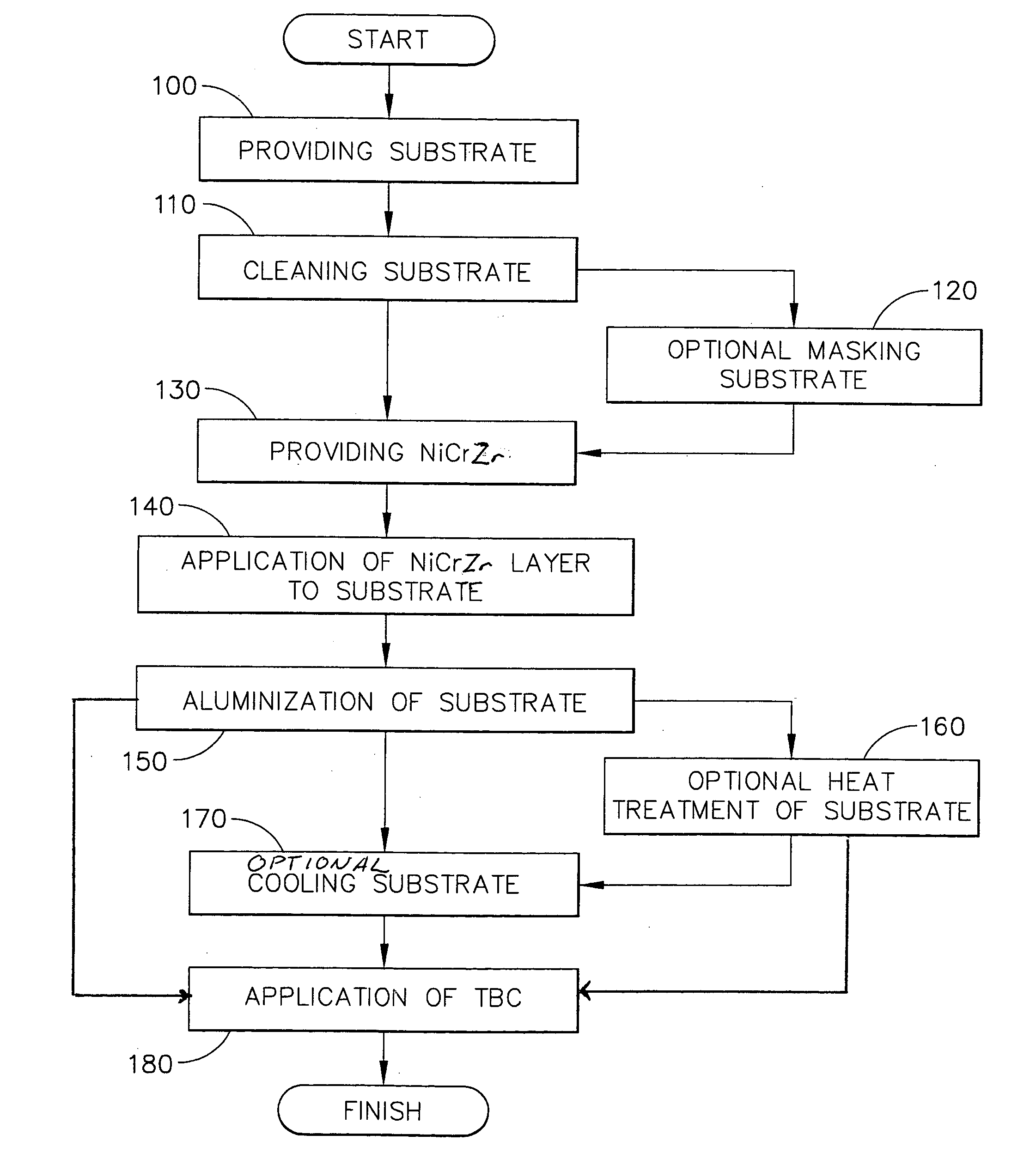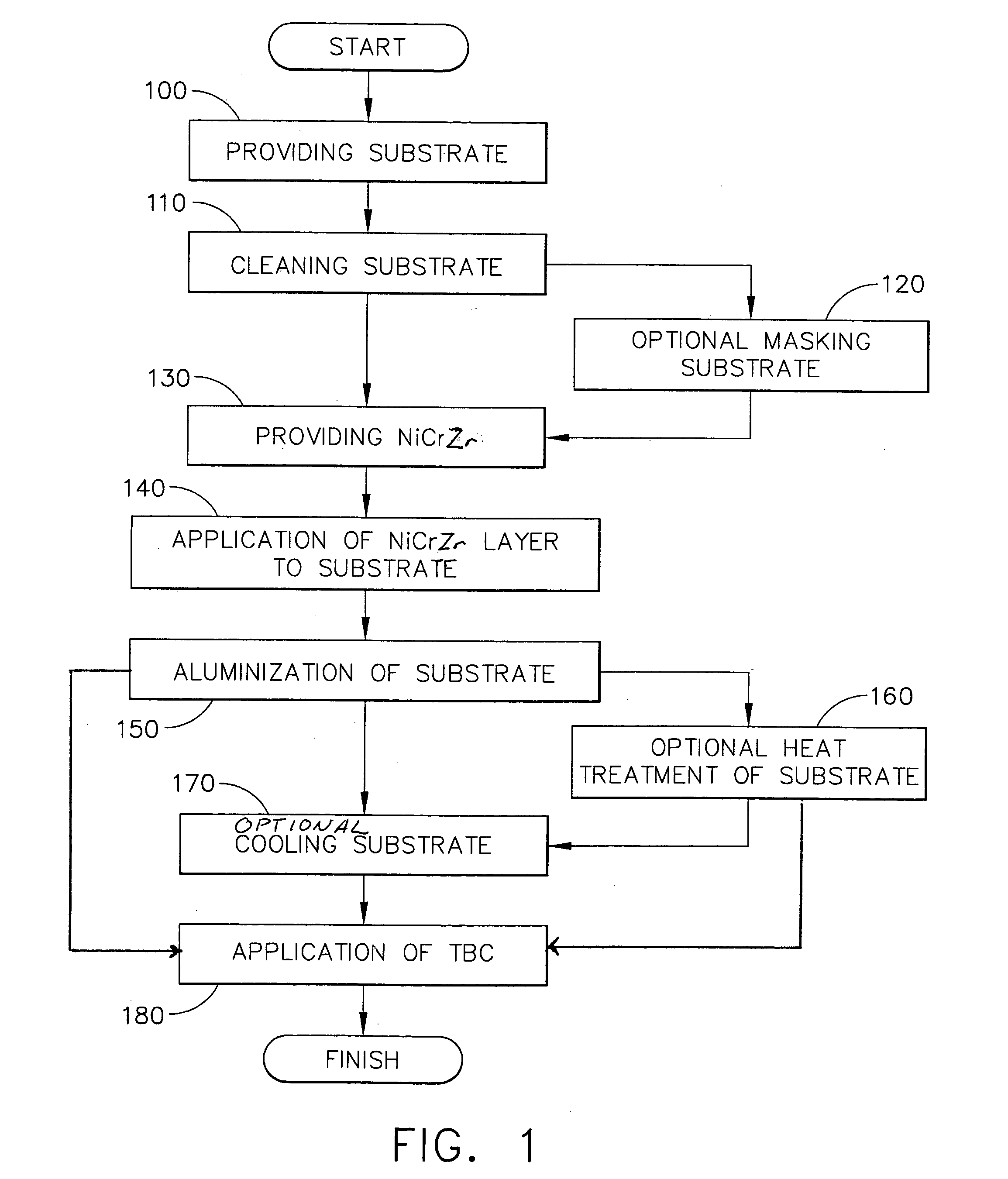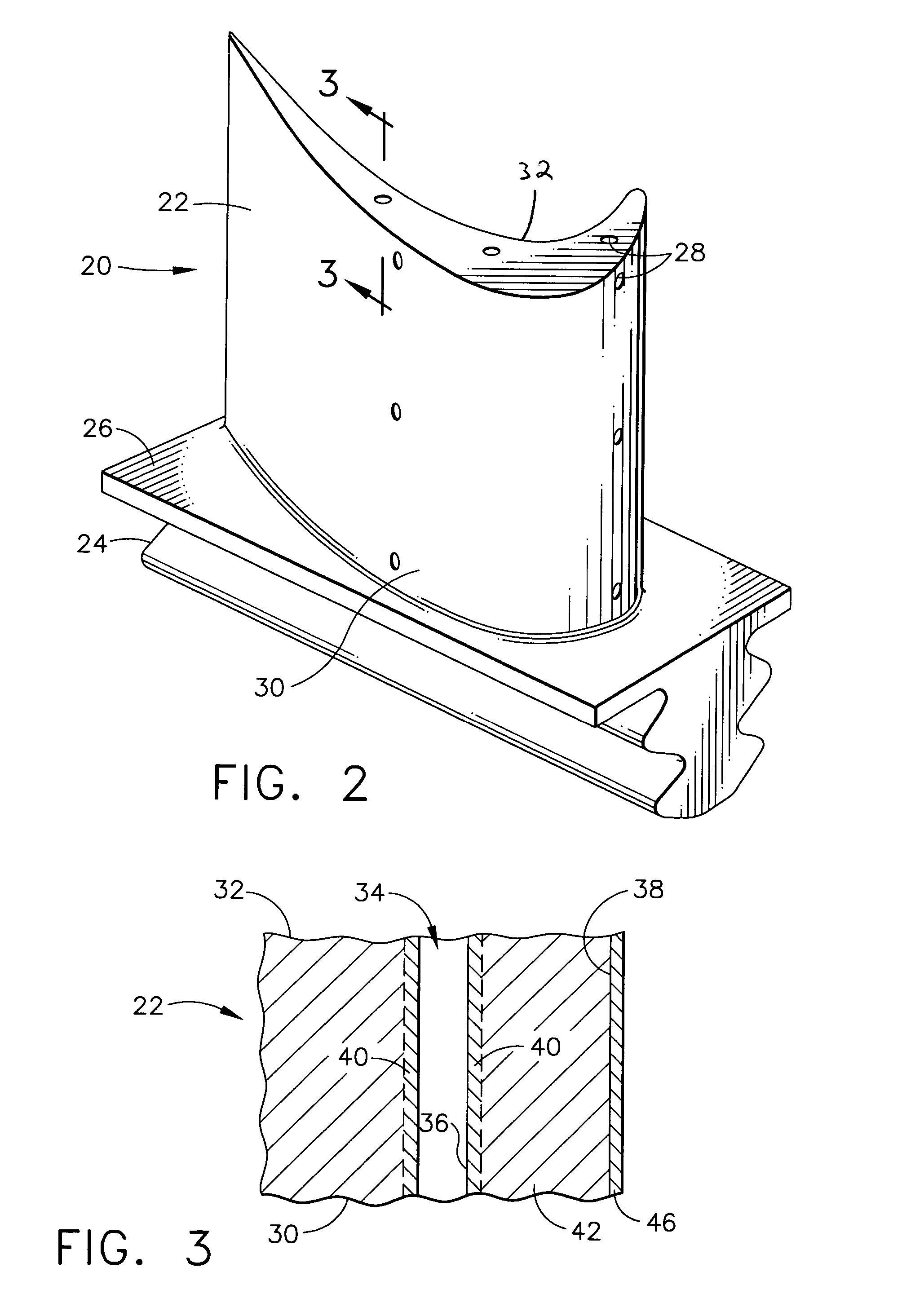Bond coat process for thermal barrier coating
a technology of thermal barrier coating and bond coat, which is applied in the direction of liquid fuel engine, vessel construction, marine propulsion, etc., can solve the problems of reducing the service life of gas turbine engines. , to achieve the effect of reducing labor and materials costs, reducing operating temperature, and reducing maintenance costs
- Summary
- Abstract
- Description
- Claims
- Application Information
AI Technical Summary
Benefits of technology
Problems solved by technology
Method used
Image
Examples
Embodiment Construction
[0022] Referring now to FIG. 1 there is shown a flow chart of the method of the present invention for applying a NiAlCrZr diffusion coating to the external surface and a diffusion aluminide coating to the internal surface of a gas turbine component, at least a portion of which comprises a metallic substrate material having an internal passage therein defined by an internal surface, and an external surface. The initial step of the process 100 is the provision of a substrate having an internal passage therein defined by an internal surface, and an external surface. Optionally, some portions of the internal surface and / or external surface may be masked to prevent deposition of the subsequent NiCrZr or NiAlCrZr layer. Such masking is known to the art. In a preferred embodiment, the substrate has an internal passage therein defined by an internal surface, and an external surface. In a most preferred embodiment, the substrate is a gas turbine engine component having internal cooling passa...
PUM
| Property | Measurement | Unit |
|---|---|---|
| thickness | aaaaa | aaaaa |
| thick | aaaaa | aaaaa |
| thickness | aaaaa | aaaaa |
Abstract
Description
Claims
Application Information
 Login to View More
Login to View More - R&D
- Intellectual Property
- Life Sciences
- Materials
- Tech Scout
- Unparalleled Data Quality
- Higher Quality Content
- 60% Fewer Hallucinations
Browse by: Latest US Patents, China's latest patents, Technical Efficacy Thesaurus, Application Domain, Technology Topic, Popular Technical Reports.
© 2025 PatSnap. All rights reserved.Legal|Privacy policy|Modern Slavery Act Transparency Statement|Sitemap|About US| Contact US: help@patsnap.com



